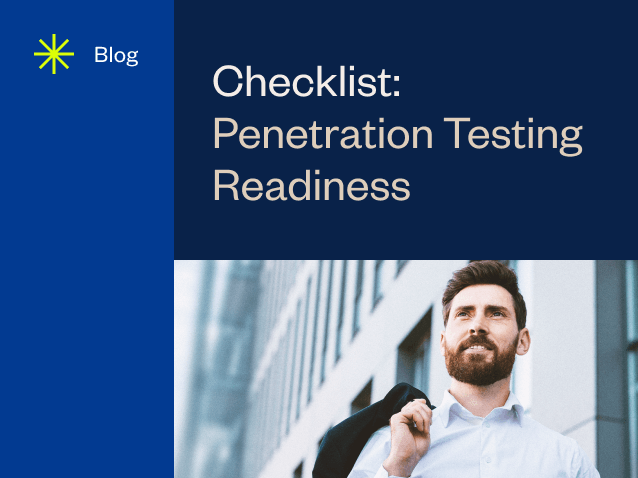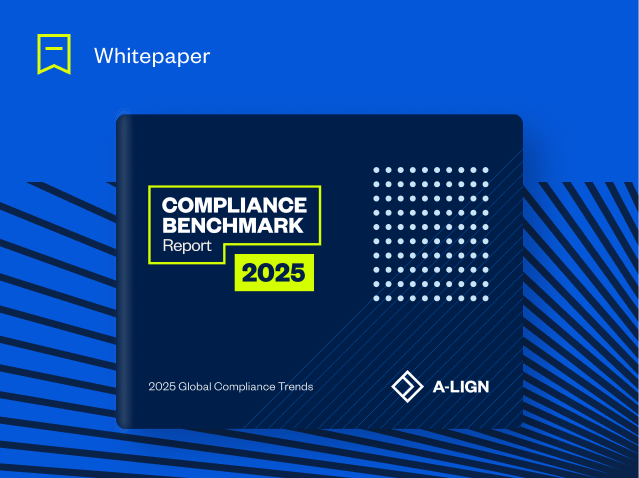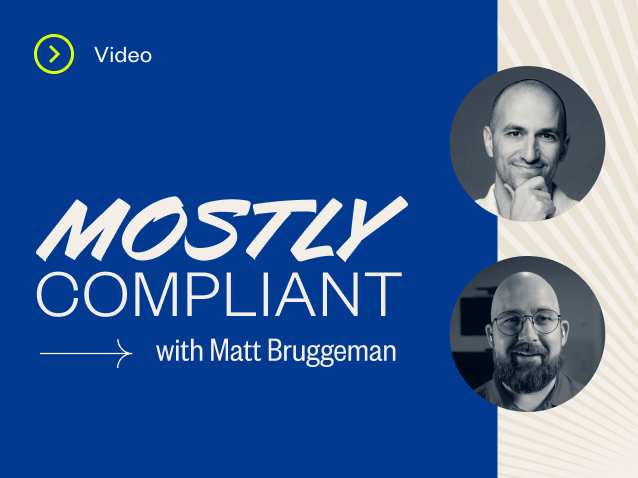A Comprehensive Checklist for Penetration Testing Readiness

Penetration testing is a critical component of a robust cybersecurity strategy, aiming to replicate real-world attack scenarios on the digital infrastructure. However, the effectiveness of penetration testing hinges on thorough preparation. In this blog, we’ll explore how you can prepare your organization for a penetration test, and how to turn readiness into an action that strengthens your digital defenses. Keep reading for a list of key activities and download our Penetration Testing Readiness Checklist for more.
The purpose of preparation
The first step before you begin penetration testing is to complete pre-testing groundwork. But, this isn’t just about ticking boxes on a checklist, it is about a series of actions to improve your organization’s security posture. To start, organizations should:
- Align their security posture with industry best practices
- Identify risks that might be overlooked in daily operations
- Ensure personnel are aware, trained, and ready to respond
Penetration testing checklist
The detailed checklist outlined below is your map to a pen testing preparedness. It outlines the critical steps to gauge and elevate your readiness level for a penetration test, ultimately improving your defense and response strategies against cybersecurity threats. Want more? Check out our complete Penetration Testing Readiness Checklist.
Organizational preparation
Documented Objectives: The purpose of the penetration test should be clear and aligned with business objectives. These objectives will guide the scope and depth of your test.
Organizational Chart: A clear depiction of authority and responsibility helps in directing the flow of communication between stakeholders and the testing team.
Defined Responsibilities: Ensure that every role has clear guidelines on their involvement in the penetration testing process, including those who will lead the effort and those who will be audited.
Separation of Duties: Preventing conflicts of interest is paramount. Implementation should ensure that no single individual has control over all aspects of a task.
Board of Directors or Executive Oversight: High-level representation ensures that decisions are backed by the required budget and priority.
Policies and procedures
Hiring and Onboarding Procedures: Proper vetting and training of personnel helps to protect against insider threats.
Code of Conduct: This provides an ethical framework for employee actions and interactions with the penetration test.
Employee Handbook: All personnel should be acquainted with the rules and security measures specific to your organization.
Awareness and Ongoing Training Activities: Regular updates and training sessions keep security at the forefront of operation strategies.
Distribution of Policies: Policies are only effective when they are known. A clear communication plan is essential.
Personnel Evaluations: Regular assessments ensure that all staff members are continually adhering to security protocols.
Technical readiness
Inventory of Assets: Identifying and documenting all hardware and software assets enable thorough testing coverage.
Network and Application Architecture Details: This blueprint aids testers in navigating your systems effectively and efficiently.
Initial Vulnerability Scan: Conducting a preliminary scan gives you an overview of potential vulnerabilities and the breadth of issues that penetration testing might reveal.
Data Classification: Sensitivity classification enables testers to prioritize the most critical data, imitating real-world attack scenarios more accurately.
Controlling environmental variables
To mitigate surprises during a pen test, it’s essential to have control measures in place. These strategies secure the integrity of your systems and data, while also protecting the testing team from potential legal or professional ramifications. Want to learn more? Download our Penetration Testing Readiness Checklist.
Establishing test windows
Coordination with IT Operations: Keep them in the loop about the timing of the test to avoid conflicts in operations.
Notification to Third-Party Service Providers: Any systems controlled or managed by outside vendors should be scheduled for penetration testing in collaboration with them.
Legal and ethical considerations
Proper Authorization: Ensure that the testing team has explicit permission to probe your systems, applications, or network.
Impact Analysis: Conduct an assessment to determine the potential disruptions the test might cause and plan accordingly.
Scope Limitations: Clearly define what is in scope for testing to prevent unauthorized access to critical systems.
Client and Third-Party Notification: Notify your clients and third parties about the impending test, especially if there is potential for service disruptions.
Preparing your team for pen testing
A penetration test may challenge not just your cybersecurity measures, but also your human resources. Preparing your team involves psychological and professional readiness to handle the outcomes and implement necessary changes post-test.
Team skills assessment
Knowledge Base Evaluation: Determine whether your security team has the skills to decipher and act upon the findings of the penetration test.
Recruitment of Skills Gaps: For more complex and robust testing, consider hiring external specialists to complement your in-house team’s knowledge.
Psychological and social readiness
Contextualizing the Test as a Learning Opportunity: Frame the penetration test as a collaborative tool that can enhance the organization’s overall security posture.
Counseling for Potential Stress: High-stress environments, such as those experienced in cybersecurity exercises, can lead to burnout. Prepare your team mentally.
Responding to penetration test results
The end of a penetration testing engagement is not a wind-down to business as usual. Instead, it triggers a series of high-impact responses and analyses that feed back into your cybersecurity strategy, turning passive readiness into active protection.
Assessment of test results
Documentation of Findings: Every identified vulnerability must be exhaustively documented with information about its exploitability and potential impact.
Prioritization of Remediation Actions: Classify the findings based on their criticality and potential impact and create an action plan for remediation.
Implementation of remediation strategies
Immediate Fixes: Some vulnerabilities warrant an immediate fix to prevent exploitation. Implement these first.
Mid-Term Remediation Planning: Develop a more extensive plan to address issues in the medium term that require design changes or architectural improvements.
Long-Term Strategic Adaptation: Use the findings to inform long-term security strategy and architecture that are in line with current and future threats.
Penetration testing readiness is more than a requirement to tick off a compliance checklist. Committing to a comprehensive readiness strategy not only primes your organization for potential vulnerabilities, but also contributes to a culture of security-awareness at every level. When the time comes, your team can face the challenge with grit and knowledge. For more, download our Penetration Testing Readiness Checklist.





